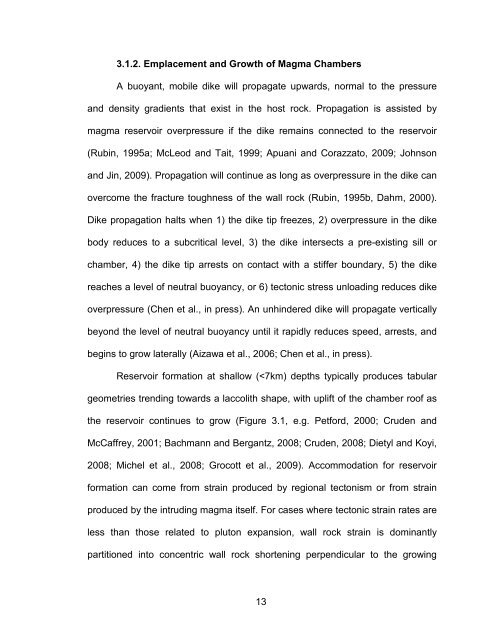You also want an ePaper? Increase the reach of your titles
YUMPU automatically turns print PDFs into web optimized ePapers that Google loves.
3.1.2. Emplacement and Growth <strong>of</strong> Magma Chambers<br />
A buoyant, mobile dike will propagate upwards, normal to the pressure<br />
and density gradients that exist in the host rock. Propagation is assisted by<br />
magma reservoir overpressure if the dike remains connected to the reservoir<br />
(Rubin, 1995a; McLeod and Tait, 1999; Apuani and Corazzato, 2009; Johnson<br />
and Jin, 2009). Propagation will continue as long as overpressure in the dike can<br />
overcome the fracture toughness <strong>of</strong> the wall rock (Rubin, 1995b, Dahm, 2000).<br />
Dike propagation halts when 1) the dike tip freezes, 2) overpressure in the dike<br />
body reduces to a subcritical level, 3) the dike intersects a pre-existing sill or<br />
chamber, 4) the dike tip arrests on contact with a stiffer boundary, 5) the dike<br />
reaches a level <strong>of</strong> neutral buoyancy, or 6) tectonic stress unloading reduces dike<br />
overpressure (Chen et al., in press). An unhindered dike will propagate vertically<br />
beyond the level <strong>of</strong> neutral buoyancy until it rapidly reduces speed, arrests, and<br />
begins to grow laterally (Aizawa et al., 2006; Chen et al., in press).<br />
Reservoir formation at shallow (
















